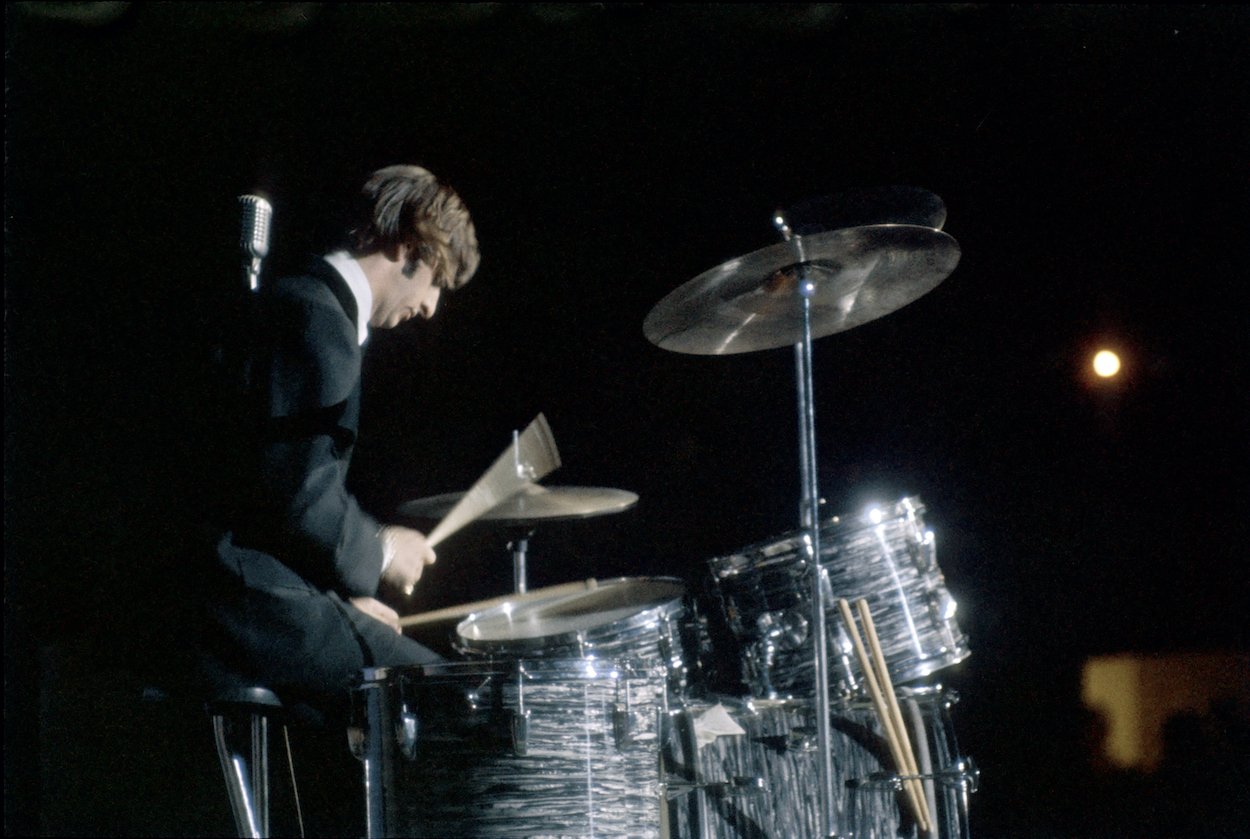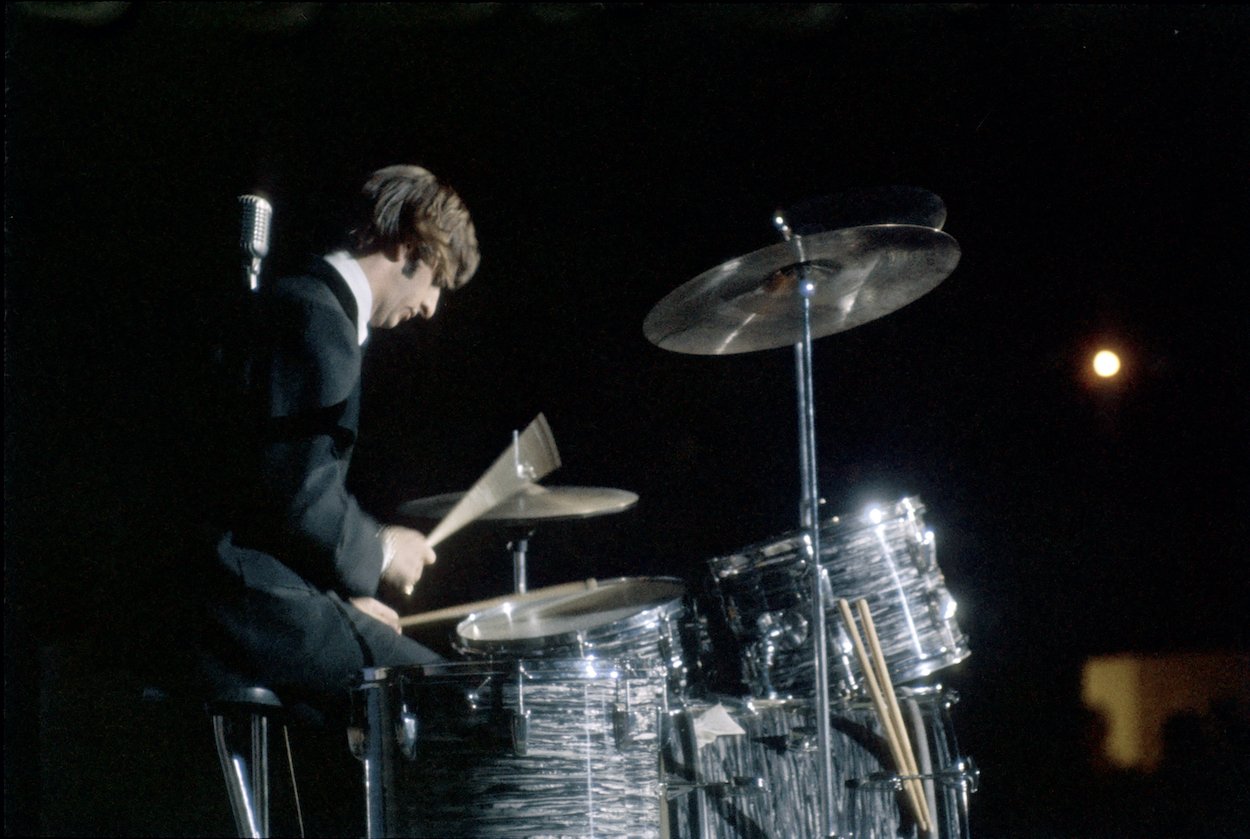
Ringo Starr and The Beatles Did Things Backward on 1 ‘Sgt. Pepper’s’ Song, and It’s Wonderful
The other three Beatles often overshadowed Ringo Starr. Primary songwriters George Harrison, John Lennon, and Paul McCartney earned most of the recognition during the Fab Four’s career. Still, adding Ringo to the mix helped propel The Beatles to new heights, and his level-headed nature helped them handle their fame in a way that allowed them to avoid ending up like Elvis Presley. Ringo’s key contributions came on the records, too, such as the innovative way he made his drums sound unique on the Sgt. Pepper’s Lonely Hearts Club Band song “A Day in the Life.”

Ringo Starr’s unique drum sound on ‘Sgt. Pepper’s’ song ‘A Day in the Life’ came by doing things backward
Ringo’s work on Abbey Road was exceptional. The deft drum work to George Harrison’s tender ballad “Something” and his playing the side 2 medley he called his favorite album moment with The Beatles are unforgettable.
Ringo wasn’t a huge fan of recording Sgt. Pepper’s, but his drum sound and performance on “A Day in the Life” were both memorable. The drummer can thank recording engineer Geoff Emerick for the drum sound, which came from doing things backward and including some extra equipment, such as towels and glass jugs. As Michael Seth Starr (no relation) writes in the Ringo biography With a Little Help:
“Emerick achieved [the drum sound] by removing the bottom heads of Ring’s tom-toms, miking them from underneath and wrapping a microphone in a towel and placing it in a glass jug to record Ringo’s floor tom.”
How Ringo Starr achieved the unique drum sound on ‘Sgt. Pepper’s’ standout song
Perhaps the most impressive thing about the drum sound on “A Day in the Life” is that the listener can tell Ringo and Emerick did things unconventionally, and, coupled with Ringo playing, it’s extraordinary.
Ringo’s unique drum sound and technique on ‘A Day in the Life’ comes through on the ‘Sgt. Pepper’s’ album
As tended to happen once The Beatles gave up touring to focus on studio experimentation, their revolutionary techniques came through on the album. The same goes for Ringo’s drumming on “A Day in the Life.”
According to Drum Magazine, miking drums for classic rock typically involves putting one mic in front of the bass drum and two suspended above the kit. Ringo and Emerick did the opposite. Miking from the bottom and covering the floor-tom hardware in towels and glass jugs gives Ringo’s toms extra oomph.
Listen to Ringo’s drumming on the “Sgt. Pepper’s” reprise just before “A Day in the Life,” and the toms sound flat. On the album’s finale, however, the toms resonate and reverberate. The sound is huge, just like the song itself.
Equally as impressive as the ingenious miking technique on “A Day in the Life” is Ringo’s performance. He comes up big on what many consider the greatest Beatles song.
Ringo always prided himself on not over-drumming, and he doesn’t on the Sgt. Pepper’s closer. We don’t hear his drums until 45 seconds into the song, but the first thing we hear is a snare-tom-snare-tom-tom-tom fill that showcases the miking technique. When the strings start to swell about a minute later, Ringo lets it happen while tapping his hi-hat rather than trying to compete.
The drummer had plenty of personal highlights in The Beatles’ later years, but his work on “A Day in the Life” is one of his high water marks. His playing on the song is exactly what the classic tunes needs. Nothing more, nothing less.
The former Richard Starkey never got enough credit for his drumming skills
John and Paul wrote the lion’s share of The Beatles’ music from the start. The pair’s prolific output overshadowed Ringo and George’s talents. Still, history has been incredibly kind to the drummer.
He had a chance to flash his skills as the Fab Four’s songs became more complex. The 1966 B-side “Rain” was a prime example. His drum work on the song included rolling beats that incorporated the tom-toms and floor tom. Ringo’s liberal use of fills throughout the song was unlike anything he’d done with the Beatles to that point. It’s a reason he later called it one of The Beatles’ weird tracks since it was the only time he played so busy.
Ringo said he had a self-centered reason for loving the Abbey Road sessions, but Sgt. Pepper’s was a different story. John and Paul were so bossy and particular that Ringo and George found them boring since they felt more like session players.
Ringo didn’t love the Sgt. Pepper’s sessions, but he and engineer Geoff Emerick helped create a unique drum part on “A Day in the Life,” and Fab Four fans are better off for it.
For more on the entertainment world and exclusive interviews, subscribe to Showbiz Cheat Sheet’s YouTube channel.

